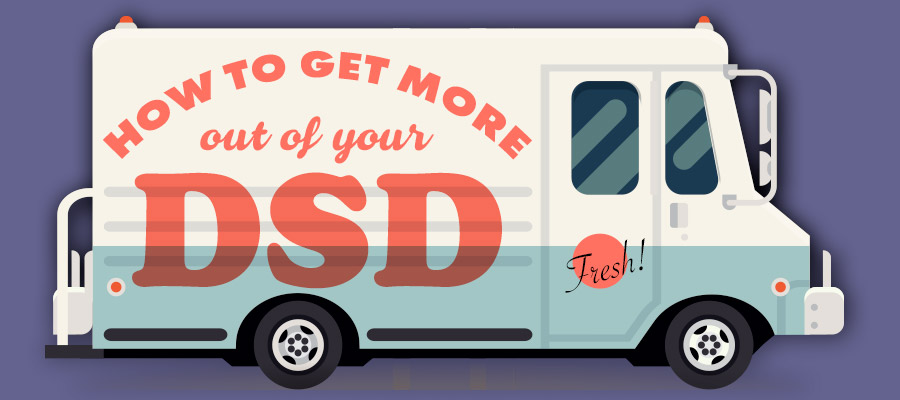Chips and salsa. Meats and cheese. Bread. Beer. Everyone has their favorite foods. The good stuff that gets devoured the moment you get the grocery bags inside because it’s just that tempting (and you really don’t feel like making a whole meal when there’s a perfectly vibrant jar of salsa ready and waiting). But have you ever thought of how your favorite products end up in the aisles of your local supermarket and how the shelves are always stocked with a plethora of options?
Keeping high-volume, fast-turning goods consistently available requires quick movement through the entire supply chain, from production to distribution. This swiftness is particularly essential when it comes to transporting inventory from the point of manufacture to the point of sale. To meet the demand for a more efficient way of getting these products to retailer shelves, the distribution model is known as direct store delivery, or DSD, was designed.
DSD is a method of delivering goods directly from manufacturer to retailer, bypassing the need for a separate distribution center. Products sold using this method generally have high inventory turns, short shelf life, and consistent demand. Think meat, milk, personal care products, and fresh produce.
Mainly utilized by food manufacturers, the DSD model has many inherent advantages. Direct store delivery solutions:
- Support popular just in time and lean inventory manufacturing practices,
- Enable faster order entry to cash receipt, and
- Reduce warehousing costs and out-of-stock issues via quick movement through the supply chain.
Sure, those may be some of the more obvious benefits. But what about other, lesser-known features?
When a DSD system works smoothly with the overall ERP database, manufacturers can recognize massive increases to flexibility and responsiveness to order modifications and fluctuations in demand. Due to the very nature of bypassing distribution centers and other midpoints, new products are pushed to shelves, and therefore consumers, faster, leading to increased brand awareness and sales. Plus, when the transport and distribution are managed by the manufacturing company themselves, they can plan and optimize routes and deliveries based specifically on product demand.
While these features are important, an even more vital aspect is that the selected DSD platform interacts seamlessly with its underlying databases. Without this data syncing, users would have difficulty making timely decisions and potentially waste resources duplicating work so it is recorded in both systems. At a time when the human attention span has dwindled to less than that of a goldfish, ain’t nobody got time for that.
This is where DEACOM’s DSD application comes into play. While companies can use the application and reap the aforementioned benefits, some of the underutilized features that we have identified include:
- Color-Coded Map – Take the data from the Daily Sales Calendar a bit further and create a color-coded map of all ship-to locations scheduled for the day. This visual will help distribution managers to better optimize driving routes.
- Barcodes – Incorporate as many processes as possible to help eliminate the potential for human error. Barcodes can play a significant role to easily count items while loading and unloading trucks.
- Document Configuration – Configure the layout and information included on receipts, invoices, and other reports printed from the DSD application. Tailor invoice layouts based on customer preference or restrict pricing information from being displayed on reports if it is not vital to delivery personnel.
- Offline Capabilities – Complete deliveries, make sales orders, and finalize returns even when there is poor or no internet access. Once Wi-Fi or cellular data is re-established, it will automatically sync all activity saving precious time en route.
- Security Control – Enforce the same security restrictions as configured in the main application and set permissions as to which DSD users can be permitted to accept payments or bypass e-signature requirements.
Simply put, the benefits are endless and can lead to massive gains across inventory turns, customer satisfaction, time and resources used, and perhaps most importantly, sales. And if I learned anything from Puff Daddy, it’s that 1) it’s all about the Benjamins and 2) Ciroc is the vodka of New Year’s Eve. So, get to your local grocer and stock up on your favorite party foods and spirits, because New Year’s is right around the corner and while these products are generally always in stock thanks to DSD practices, why take the chance?
